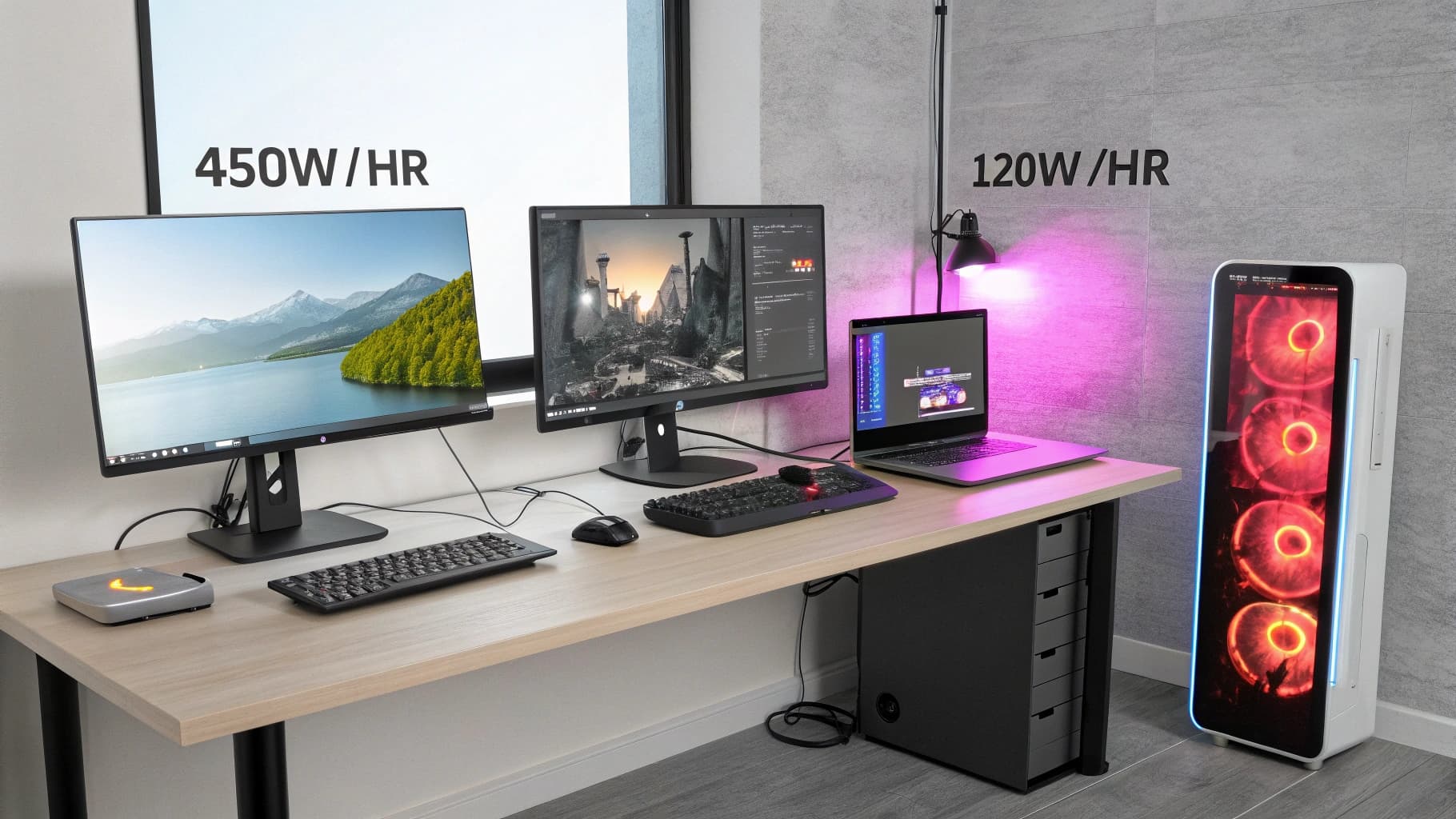In recent years, the trend of multi-screen setups has gained significant traction among professionals and tech enthusiasts alike. I find myself drawn to the allure of having multiple monitors, as they offer an expansive workspace that can enhance productivity and streamline workflows. The ability to have several applications open simultaneously, without the need to constantly switch between tabs, is a game-changer for anyone who relies on technology for their daily tasks.
Whether I’m working on a complex project, engaging in video calls, or simply browsing the web, the convenience of a multi-screen setup cannot be overstated. The appeal of multi-screen configurations extends beyond mere aesthetics; they can significantly improve efficiency. I often find that having a dedicated screen for communication tools, such as email or chat applications, allows me to stay connected without interrupting my primary work.
This setup not only helps me manage my time better but also reduces the cognitive load associated with constantly shifting focus. As I delve deeper into the world of multi-screen setups, I realize that understanding their power consumption and energy efficiency is crucial for making informed decisions about my workspace.
Understanding Power Consumption
When I think about setting up multiple screens, one of the first considerations that comes to mind is power consumption. Each monitor I add to my workspace contributes to the overall energy usage, which can have implications for both my electricity bills and the environment. It’s essential to recognize that different types of monitors consume varying amounts of power.
For instance, LED monitors are generally more energy-efficient compared to older LCD models. As I explore my options, I make it a point to research the specifications of each monitor to understand their energy requirements. Moreover, the size and resolution of the screens also play a significant role in determining power consumption.
Larger screens with higher resolutions tend to draw more power, which can add up over time. I often find myself weighing the benefits of having a larger display against the potential increase in energy costs. By being mindful of these factors, I can make choices that align with my productivity needs while also considering the financial and environmental impacts of my setup.
Factors Affecting Energy Efficiency
As I delve deeper into the intricacies of energy efficiency in multi-screen setups, I discover several factors that influence how much power my monitors consume. One significant aspect is the brightness level of the screens. I’ve noticed that keeping my monitors at maximum brightness not only strains my eyes but also leads to higher energy usage.
By adjusting the brightness to a comfortable level, I can reduce power consumption without sacrificing visibility. Another factor that affects energy efficiency is the use of power-saving features available on most modern monitors. Many screens come equipped with settings that automatically adjust brightness based on ambient light or enter sleep mode after a period of inactivity.
I’ve found that enabling these features can significantly lower energy consumption when I’m not actively using my monitors. Additionally, the type of cables and connections I use can also impact efficiency; for instance, using HDMI cables instead of older VGA connections can lead to better performance and lower power usage.
Comparison of Single-Screen and Multi-Screen Setups
When comparing single-screen setups to multi-screen configurations, I often reflect on my own experiences and preferences. A single monitor can be sufficient for many tasks, especially for those who primarily engage in basic computing activities like browsing or word processing. However, as someone who frequently juggles multiple projects and applications, I find that a multi-screen setup offers unparalleled advantages in terms of organization and accessibility.
In my experience, having multiple screens allows me to dedicate each monitor to specific tasks or applications. For example, I can keep my email client open on one screen while working on a document on another. This arrangement minimizes distractions and helps me maintain focus on my work.
While single-screen setups may be more energy-efficient in terms of power consumption, the productivity gains from a multi-screen configuration often outweigh the additional energy costs for me. Ultimately, the choice between single and multi-screen setups depends on individual needs and work habits.
Tips for Improving Energy Efficiency
As I strive to create an efficient multi-screen workspace, I’ve gathered several tips that can help improve energy efficiency without compromising productivity. One of the first steps I take is to invest in energy-efficient monitors that are designed with sustainability in mind. Many manufacturers now offer models with Energy Star ratings, which indicate lower power consumption without sacrificing performance.
Another effective strategy is to implement a smart power management system. By using smart plugs or power strips with timers, I can ensure that my monitors are turned off when not in use. This simple adjustment can lead to significant savings over time.
Additionally, I make it a habit to regularly check for software updates for my monitors and computers, as manufacturers often release updates that enhance performance and energy efficiency.
Impact on Electricity Bills

The impact of multi-screen setups on electricity bills is a concern that resonates with many users, including myself. As I monitor my monthly expenses, I’ve noticed that the addition of extra monitors can lead to a noticeable increase in energy costs. However, by being proactive about energy efficiency measures, I’ve been able to mitigate some of these expenses.
To better understand how my multi-screen setup affects my electricity bills, I’ve started tracking my power usage with a smart meter. This device provides real-time data on how much energy each monitor consumes, allowing me to identify patterns and make adjustments as needed. By analyzing this information, I can pinpoint which screens are drawing the most power and take steps to optimize their usage.
Environmental Considerations
In today’s world, environmental considerations are more important than ever, and as someone who values sustainability, I am increasingly aware of how my technology choices impact the planet. Multi-screen setups can contribute to higher energy consumption, which in turn leads to increased carbon emissions if the electricity is sourced from fossil fuels. This realization has prompted me to seek out eco-friendly practices that align with my values.
One way I can reduce my environmental footprint is by choosing monitors made from sustainable materials or those that are designed for recyclability. Additionally, I’ve started exploring renewable energy options for powering my home office. By utilizing solar panels or green energy providers, I can ensure that my multi-screen setup operates with minimal environmental impact.
These choices not only benefit the planet but also provide me with peace of mind knowing that I am doing my part in promoting sustainability.
Conclusion and Recommendations
In conclusion, while multi-screen setups offer numerous advantages in terms of productivity and efficiency, it’s essential to consider their impact on power consumption and overall energy efficiency. Through careful selection of monitors and implementation of energy-saving practices, I have found ways to enjoy the benefits of multiple screens without incurring excessive costs or harming the environment. As I continue to refine my workspace, I recommend that others take similar steps toward optimizing their multi-screen setups.
Investing in energy-efficient monitors, utilizing smart power management systems, and being mindful of usage patterns can lead to significant improvements in both energy consumption and electricity bills. Ultimately, by balancing productivity needs with environmental considerations, we can create workspaces that are not only efficient but also sustainable for future generations.
FAQs
What is power consumption?
Power consumption refers to the amount of electrical energy used by a device or system over a period of time. It is typically measured in watts (W) or kilowatt-hours (kWh).
What is a multi-screen setup?
A multi-screen setup refers to a computer or display system that uses more than one monitor to display content. This can include dual-monitor setups, triple-monitor setups, or even larger configurations with four or more screens.
Are multi-screen setups energy efficient?
Multi-screen setups can consume more power than single-screen setups, as each additional monitor requires its own power source. However, the energy efficiency of a multi-screen setup depends on factors such as the type of monitors used, their size, and their energy-saving features.
What factors affect the energy efficiency of multi-screen setups?
The energy efficiency of multi-screen setups can be affected by the type of monitors used (e.g., LED, LCD, or OLED), their size, brightness settings, and whether they have energy-saving features such as automatic power-off or low-power modes.
How can I make my multi-screen setup more energy efficient?
To make a multi-screen setup more energy efficient, consider using monitors with high energy efficiency ratings, adjusting brightness settings to lower levels, and enabling power-saving features such as automatic sleep mode when the monitors are not in use.
Do multi-screen setups consume more power than single-screen setups?
In general, multi-screen setups consume more power than single-screen setups, as each additional monitor adds to the overall power consumption. However, the difference in power consumption can vary depending on the specific monitors and how they are used.

